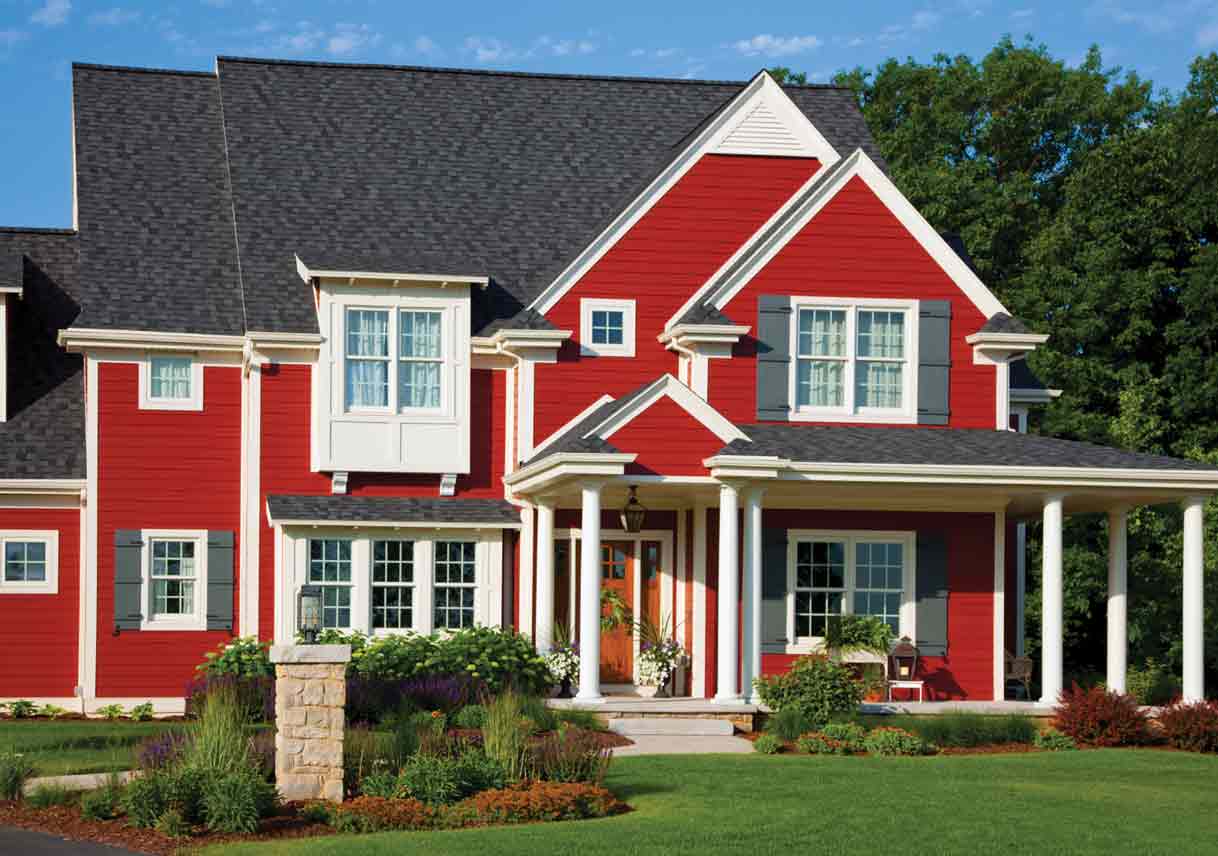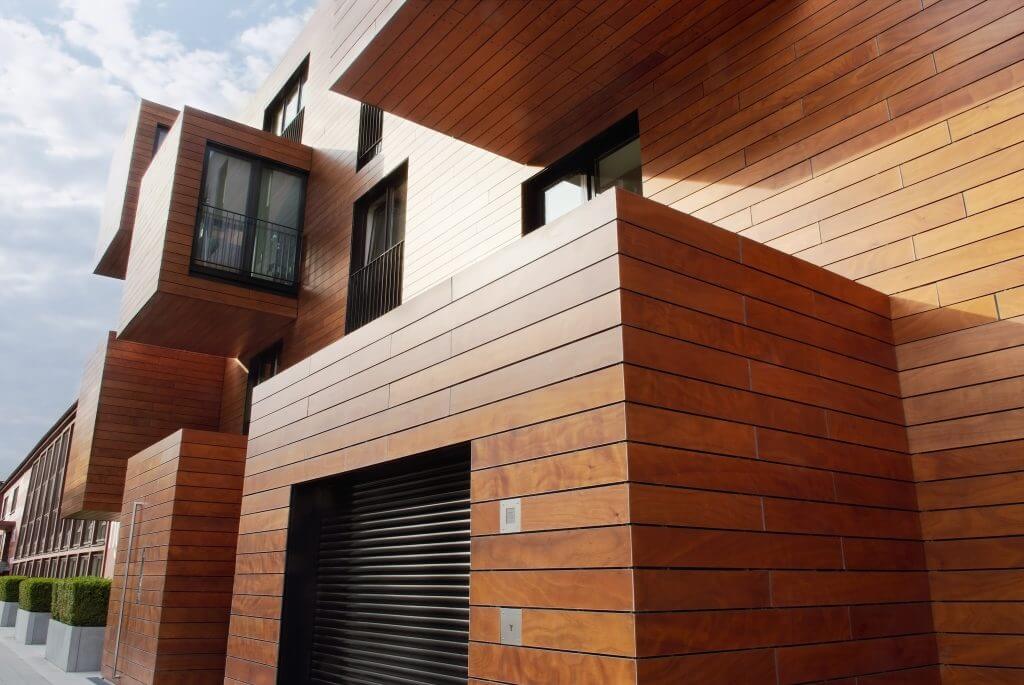7 Best Exterior Siding Options for Your Home
Table Of Content

Using lap board with other exterior materials can create an interesting look for a house. This one is a combination of lap board and a painted brick base. Contrasting the painted brick with the red brick stairs and flower bed edging makes a lovely and eye-catching visual.
Best Wood for Siding 2024 - Forestry.com
Best Wood for Siding 2024.
Posted: Mon, 31 Jul 2023 07:00:00 GMT [source]
Wood Shingle Siding
Choosing the best type of siding to install on your house is a big decision, and it’s often a difficult one. There are many different options to choose from, and it’s important to consider them all. When selecting the ideal exterior siding for your home, several key factors come into play, including durability, aesthetic value, cost and required maintenance. Each type of siding, as suggested by siding contractors, has its own set of pros and cons in these areas. Before you decide which type of siding is best for your situation, it’s helpful to consider your region, neighborhood and how much you’re willing to spend on maintenance.
What is the ROI of a Wood Siding Installation?
Cedar is both anti-fungal and antibacterial in nature, which is why you can manage fine without treating the wood. It won’t rot or crack and will last anywhere from 20 to 50 years, depending on climate and regular maintenance. There’s a good reason why so many siding types and styles mimic genuine wood – the real thing has beauty that is unsurpassed. Pine, spruce and fir, cedar and redwood are the most common types of wood used in siding.
Popular House Siding Options and How to Choose
In wood siding, the installing contractor is more important than the specific wood manufacturer. Both siding types are sold either primed for paint or prefinished. We’ve put together a comprehensive residential siding guide to assist you in researching your options for replacement and new construction projects. In addition to making vinyl siding more rigid, foam backing adds insulation.
Kingspan also provides a panel made of metal, Granistone, that has the appearance and feel of stucco masonry. In the field of construction, Alside brings more than 70 years of expertise to the table. This firm is currently a market leader in the production of vinyl construction goods and was the originator of the first residential baked enamel aluminum siding in 1947.
Brick
Also, rodents and bugs like termites can infiltrate your siding, so it’s important to watch for holes or signs of chewing on your shingles. It’s good for homeowners to regularly check for the integrity of their siding. In the case of rotten wood, it’s best to call your professional for a full tear down and replacement of that area. Once you have your home siding choices locked in, now it’s time to choose a contractor to install it!
Increased options in size, texture, and color in recent years has only made vinyl siding more popular. Like brick veneer, stone veneer offers the value-boosting elegance and durability of its natural counterpart but at a more affordable price. Most stone veneer siding is made of lightweight concrete or clay mixed with polymers for strength and pigments to give the finished product the appearance of natural stone. This upgraded vinyl option costs more but is still one of the most affordable siding choices.

Wood Siding: A Traditional Choice with some Maintenance Requirements
This makes it an ideal choice for the exterior of your house if you live in a moist or humid environment. It can also stand up to snow, so it’s also ideal for colder areas. Engineered wood siding looks almost exactly like the real thing, yet it’s made from composite materials (which means it can sometimes also be known as composite siding). It’s not as heavy as brick or natural stone, but it’s still heavy enough to warrant increased installation costs. If you’re looking to go the DIY route, be prepared to buy or rent special cutting tools.
Pros of Stone
Not only does it look like real wood, but it’s also created with a convincing texture. The downside to imitation stone and brick is that they’re not as durable. The main benefit of imitation stone or imitation brick is their low price. These materials cost much less than the real things and look almost as good.
While full brick is still available, most brick and stone installed today is veneer – .5” to 1.5” thick. Traditional stucco is made with cement, sand and limestone and applied like plaster to a metal lathe system. Lap, vertical, panel and shingle siding are available in a good range of colors and styles with matching trim. Also, ask installers to explain the company’s workmanship warranty.
This category comprises siding products made of composites such as fiber cement, a blend of cement, sand, and cellulose, which looks the most like real wood. (Hardie Plank is one widely known brand.) Fiber cement siding is fireproof and insectproof, but water can damage it during freezes and thaws if its paint is allowed to degrade. It comes factory-primed but also can be ordered prepainted for a higher cost; while your color selection is limited, factory coatings tend to last much longer. Whether primed or prepainted, fiber cement must be refinished periodically, though less often than wood.
Shakes are machine- or hand-sawn from wooden blocks called bolts. Shakes are thicker than shingles and less uniform in appearance and thickness, but they last longer. Wood shingles are sawn for a smooth and consistent look and can be cut into various shapes to create visual interest. Both come from different woods, but Western red cedar and redwood are the most common house siding options.
The Skinny on Siding: A Go-To Guide For Picking the Perfect Siding Material - Midwest Home Magazine
The Skinny on Siding: A Go-To Guide For Picking the Perfect Siding Material.
Posted: Mon, 16 Aug 2021 07:00:00 GMT [source]
But not all siding has the same R-value, and it can be surprising to learn which materials have good and not-so-great R-values. Vinyl will fade and possibly warp, and wood siding needs regular maintenance to prevent rotting. This manmade siding is treated with zinc borate to prevent moisture problems and infestations, which are some common problems with wood. Fiber cement is sometimes referred to as Hardie board, a major manufacturer of fiber cement products. Some fiber cement siding can be ordered with a factory-applied primer or primer and finish coat, along with a 15-year warranty against fading, chipping, peeling, or cracking.
Wood siding on a house typically comes in a variety of styles including clapboard, lap siding, shakes, or shingles. There are also several different types of wood to choose for new siding, including cedar, cypress, pine, redwood, and even engineered faux wood. Natural wood siding also requires quite a bit of maintenance to keep it in good shape. Unless you have cedar shakes, consider re-painting or re-staining your wood shingles every 5-7 years depending on its condition.
With added installation and labor fees, the costs are closer to $5–$15 per square foot. Your specific vinyl siding costs depend on your home size and selected style. When deciding on siding, you'll find a range of colors, but the style of your house will influence what you choose. For example, classic colors look best on Colonial styles while pastels and brighter colors feel at home on Victorian houses. Though vinyl is the cheapest and fiberboard is the most expensive, your house will benefit from the update. Siding also adds R-value to your home, which means the material can help improve the energy efficiency of your house.
Comments
Post a Comment